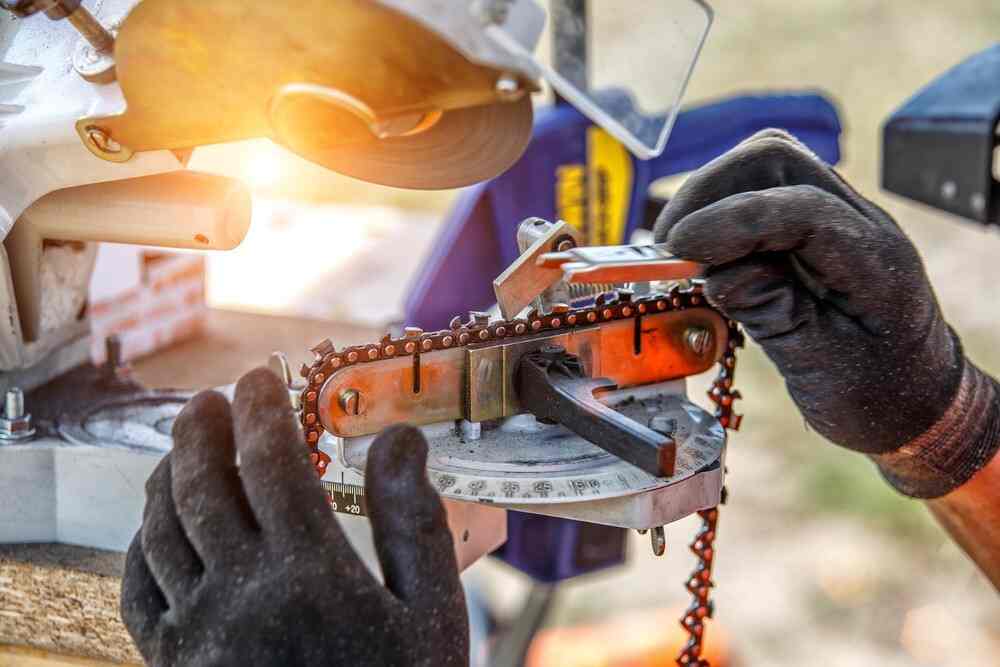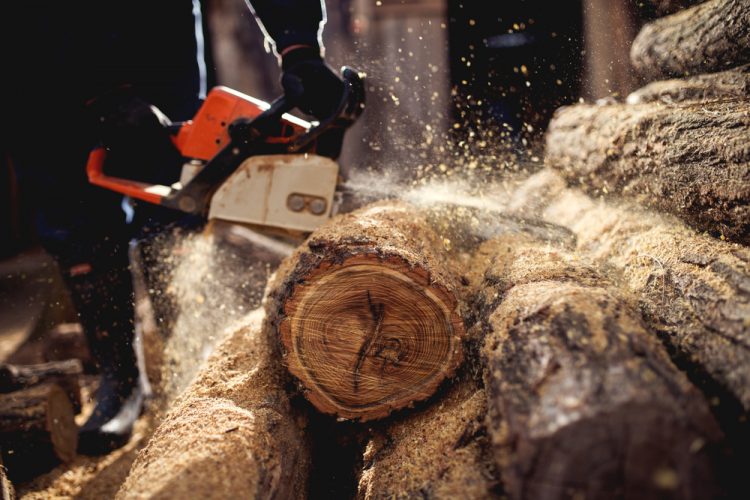Having a maintained chainsaw ensures that you work longer eradicating fatigue for the most part. Because the chain is well maintained, it will cut efficiently across the wood. But when the chain is dull—we all know the math. Dull plus poorly maintained chainsaw equals needlessly expended energy and so many “kickbacks.” Choosing the right chainsaw file sizes is important, and we will be guiding you through how to get the correct file dimension to the chain you use. And we will also be going through the types of files that exist and the gauges, to understand our chainsaws nice and sharp.
What is the Chainsaw Dimension File Determinant?
Files are particular—they will only sharpen the chainsaws they were made to sharpen. In your manual, you should find the right amount of information to get the correct file. This guide should help you out if you don’t have the manual and you need that emergency job on your chainsaw sharpener. To understand fully why chainsaws have to use a specific filer. You have to be introduced to basic knowledge about the cutting parts of a chain.
Of course, the part of the chain saw that does cutting is called the cutter. This part has to be maintained, which means. They have to be sharp at all times. The chains come with markers to inform you of when they need to be replaced.
There are three types of cutter tooth; which are; the chipper, the chisel, and the semi-chisel. They will come with both left hand and right hand cutters. This makes sure that there is an even cut across the wood.
Chipper or Round Tooth
This cutter can be operated easily and are quite versatile. They can withstand dust and the dirt at a higher rate than the chisel cutter. This is filed with a file accompanied by a guide and if you need a battery chainsaw that cuts smoothly, this can be considered. They are characterized by an end that is curved.
The Round Grind Square Tooth Semi-Chisel
Semi-chisel, when compared to the type of chisel, isn’t aggressive and can be filed with a circular file and a guide. they will stay sharp for a long time and are the most tolerant of the dust of all the cutters that exists
Chisel (Square Tooth, Square Grind)
This is the most aggressive of all of the cutters. If you no experienced in sawing it is not recommended (you can lose an arm or a leg, even a head). They are fit for commercial use like timber harvesting.
The end is shaped in a square, and cannot be filled with any file or any sharper. When the cutter has a curved ground, then you can use a round file. When it is used in a dusty or dirty area, know that they will dull quickly. They are not recommended when climbing because they have a high risk possibility of kickbacks.
What File Size Do I Need for My Chainsaw?

To decide the size for the chainsaw. There is a number at the side of the cutter—read them.
Chainsaw File Chart
Find a file chart and march the number that you found on the chart. You can also grade the pitch of the chain. The pitch is usually calibrated in millimeters from the middle of the lead pin to the middle of the third rivet. When you have gotten this distance to divide it by two and then multiply it by 0.038to convert the millimeters into inches. After getting the information, you can use the chart to get the file required. The right size will help you work safely with chainsaws.
Grading the Pitch
This is simple: the length between 3 tooth rivets which is divided by two will get the pitch: depending on the ruler you are using. Get an inch measure or if you use a millimeter measure convert the data by 0038 to convert into inches
Chainsaw File Size
After getting the pitch. Utilize a file chart to get the suitable file that is designed for the specific cutter’s pitch. If they are different, they might need a different file. E.g., the chisel cutter requires the file fit into the square cutting edge it possesses. However, the chipper cutter needs a round file. When you are filing up the chipper cutter, you have to make sure that the top plate and the side plates are sharpened with round files. As you file the depth gauge know that only flat file is recommended if you want to maintain shape.
There are three main types of files. They are; the 4mm, the 4.8mm, and finally, the 5.5mm files. They can be round files or flat files depending ultimately on the nature of cutter that you are sharpening. Go for a round file if you have a chipper cutter chain. Get the pitch and march it with the file, if the pitch s 5.5mm then you will have to get a 5.5mm round file. For chisel, cutters go with the flat file, find the pitch again and march if with the file. In cases where the chisel cutter, for example, comes with a 5.5mm, you can choose a 5.5mm flat file, so the story goes…
Flat File and Gauge
A gauge is a tool that is used to measure the length of the cutter, also the top plate angle, and can be utilized to set the appropriate depth gauge before filing. They come in four main sizes. These include the 0.43 inches, 0.50inches. The 0.058 inches and the 0.063 inches, we recommend that the depth gauge is not filed below 0.025 inches. The depth gauge on the cutter always determine the depth of the chain’s cutting.
The most common type of gauge is the 0.050-inch gauge. When you file the chain lower than the gauge, you will only end up shortening the chain’s lifespan. Make sure that you have the depth gauge filed evenly through the gauge. If you do not cut them even, then they will end up giving crooked and rough cuts which we do not want.
How to Sharpen a Chainsaw Using a File?

We will be giving tips on how to sharpen your chain properly using the flat file.
- To avoid losing a finger or the uncomfortable pain of splinters piercing through your palm please always have a glove worn before carrying out this task.
- We want to avoid uncomfortable situations. Like we make sure that the brakes for our cars are vital so also is the brakes of the chainsaw, have them checked and engaged in making sure that the chain isn’t moving.
- Fasten the guide bar gently with a vice on your work area
- Place the holder in between the bolts on the chain to make sure that the arrows are all pointing ahead
- Filing the cutter requires gentle and even strokes to avoid damage, and to prevent crooked or rough cuts
- When you are done filing at least two of the cutter, you can release the brake so that you can move the chain. then reset the restraint in the new position and sharpen the cutter on the other side of the chain can have its due of the file
- When the cutters are sharpened place the depth gauge. They are shark-fin shaped. Use the tool to file and go further t adjust the height of the gauges on the chain. If the gauges are above the cutter file them evenly with a flat-file. As far as the gauges are not too high, the cutter will not cut.
Additional Tips
Finding the right round file can be tricking. Not every saw chain is the same. The tool that you use to sharpen the saw has to match the string that you are using if you use a wrong chain as I have said earlier; you reduce the service life of the chainsaw, and you will minimally be diminishing the performances of the chainsaw.
The police recommend that you keep the receipts for everything you have bought, do that with manuals too they will save a lot of unnecessary anxiety. Before you sharpen your chainsaw make sure that everything is ready and that you are careful with every part of the chainsaw—enough has been said about the lifespan of chainsaws, we also want to emphasize your safety.
I hope the information has been helpful.








